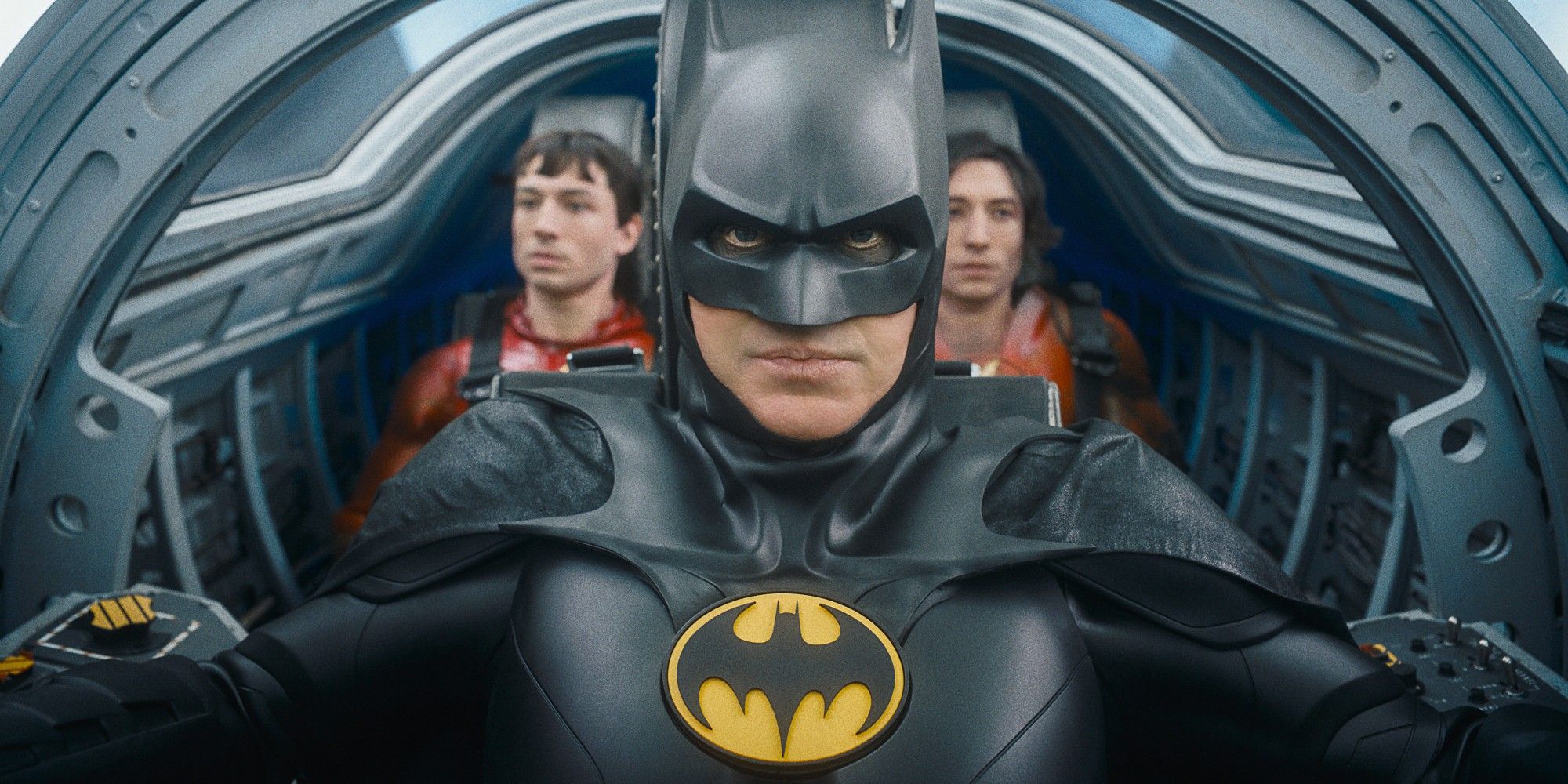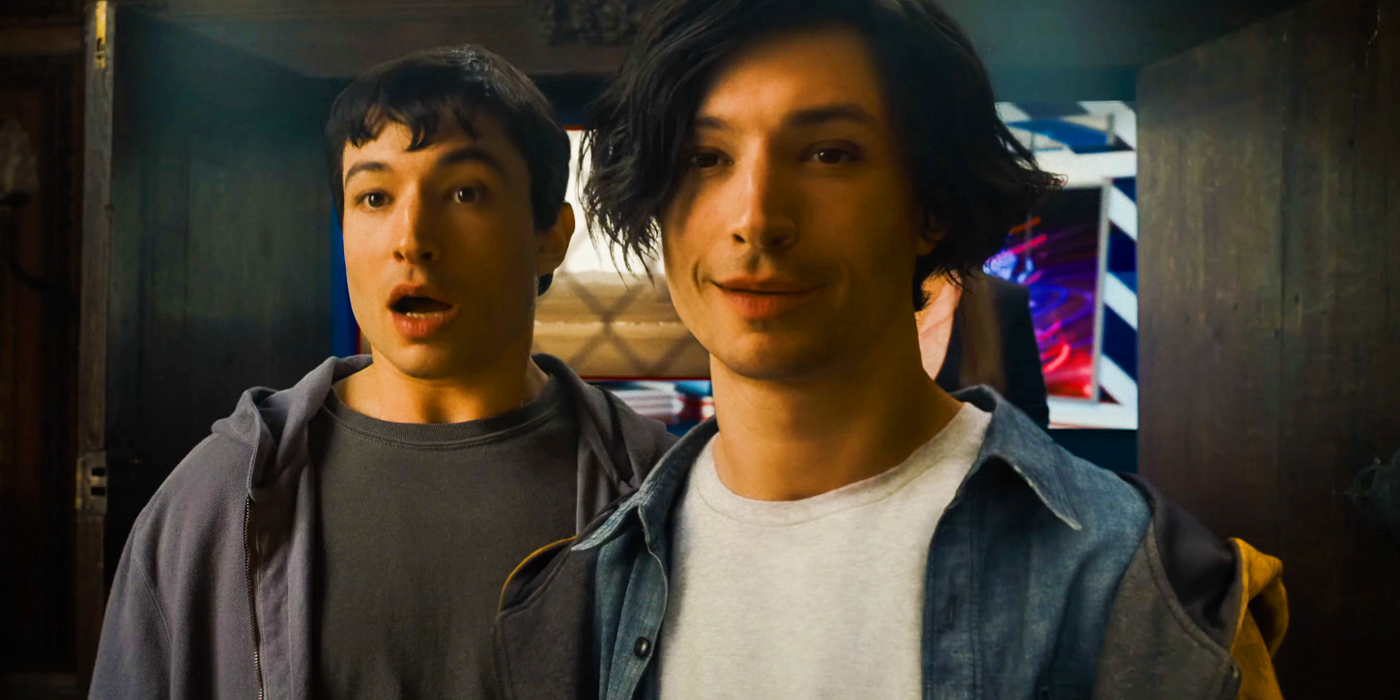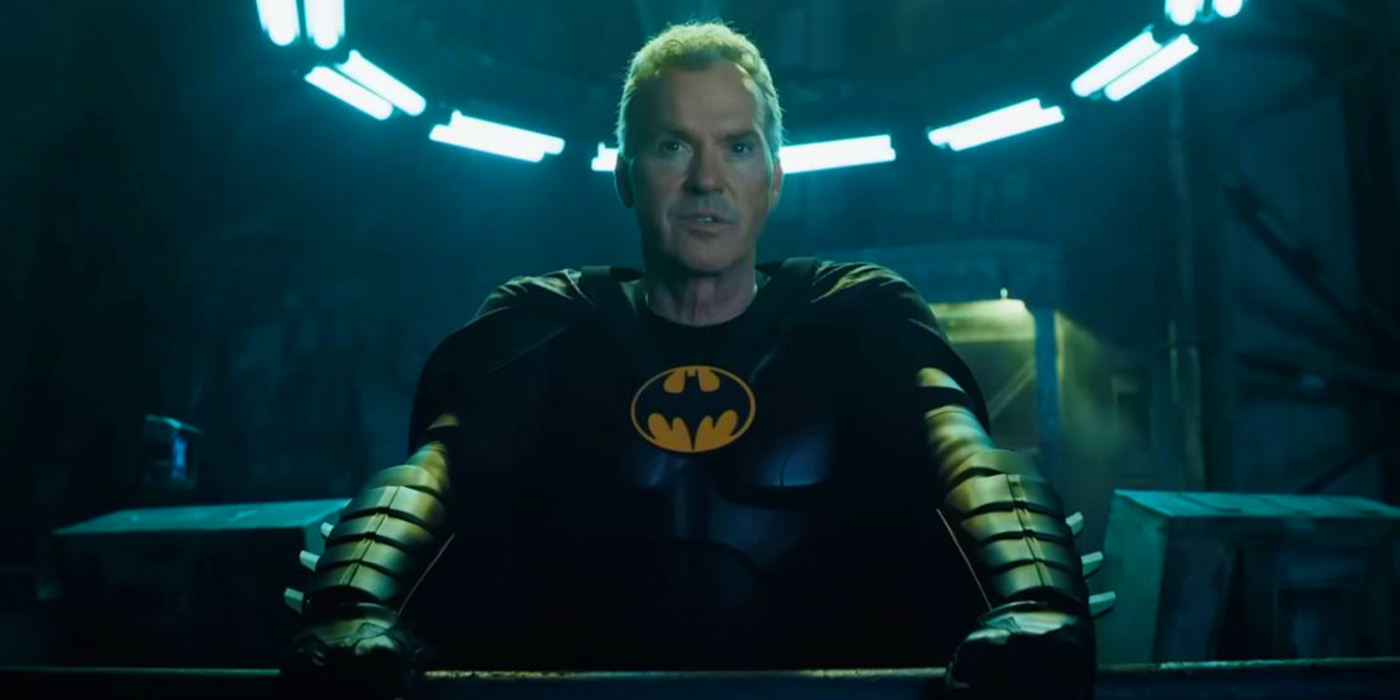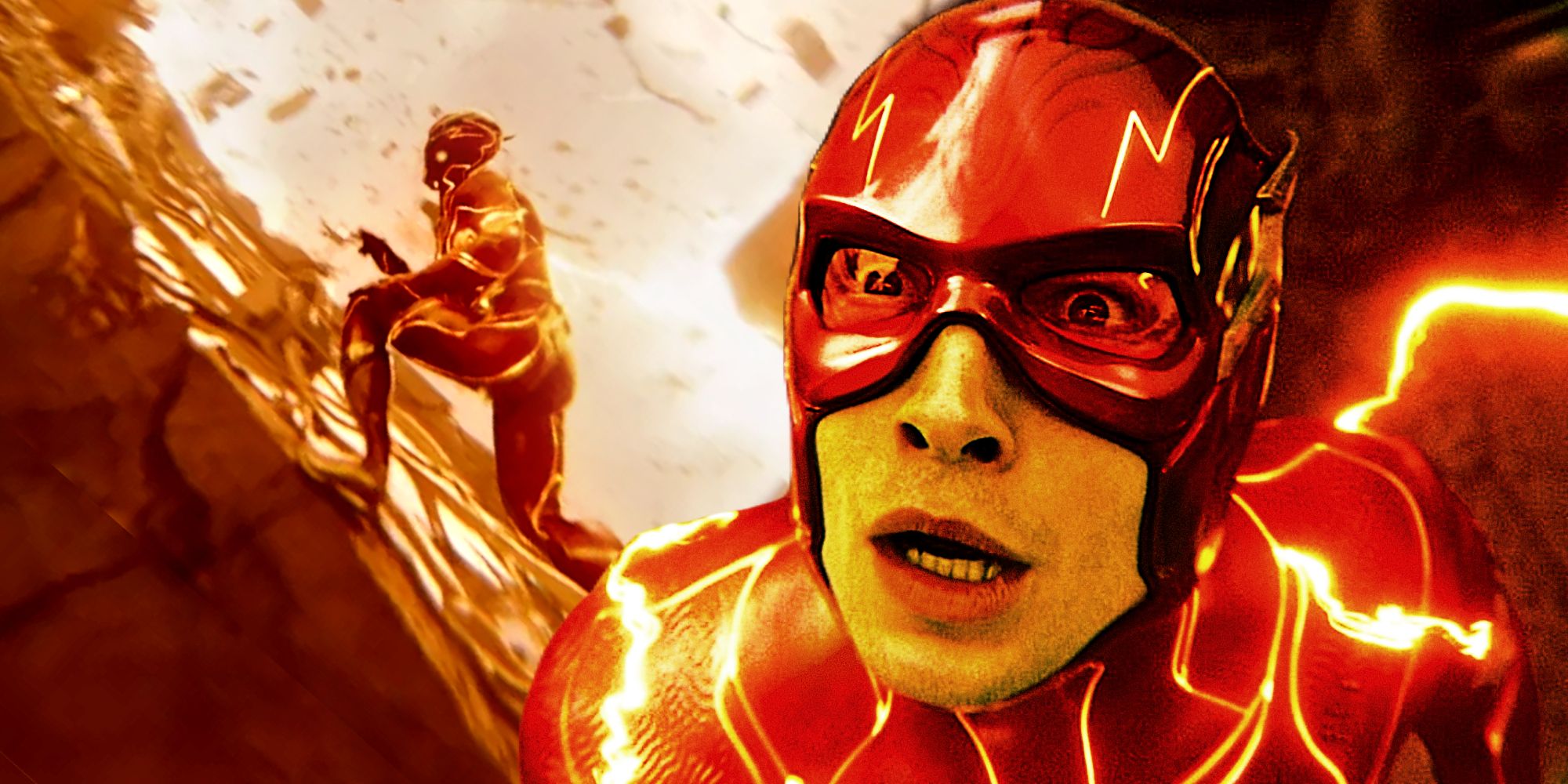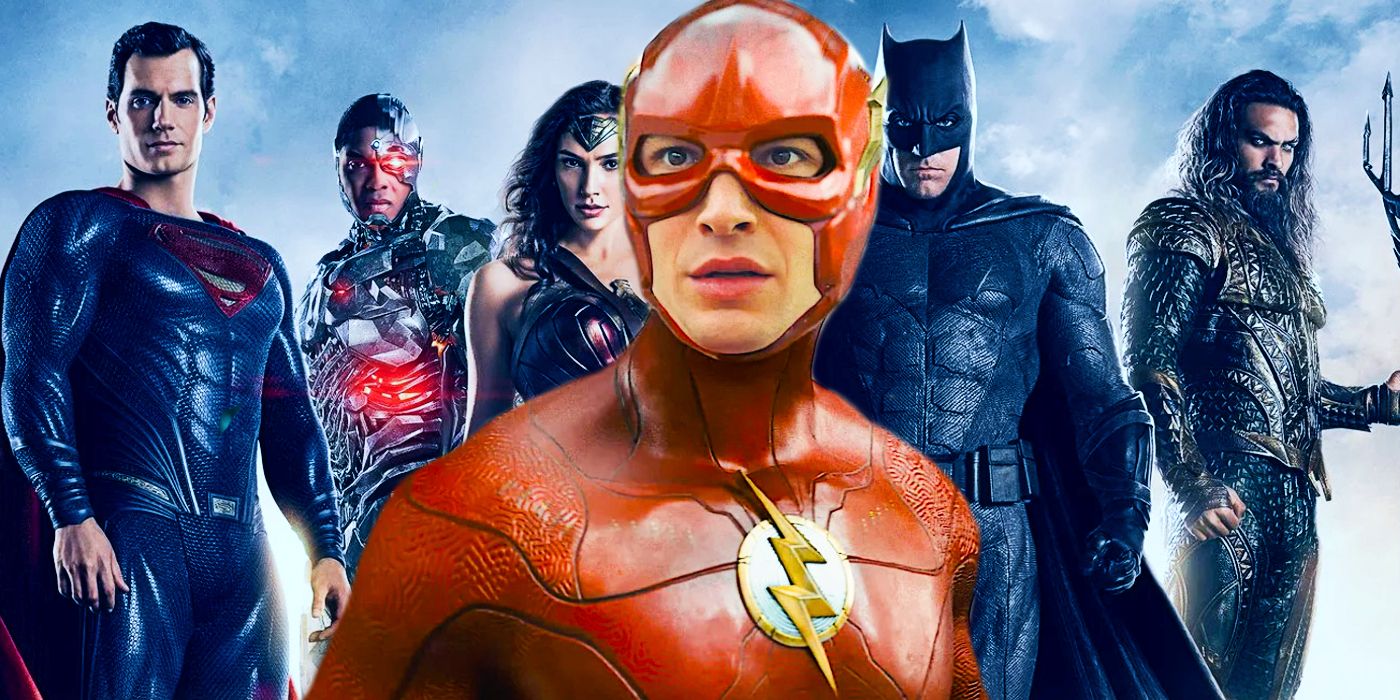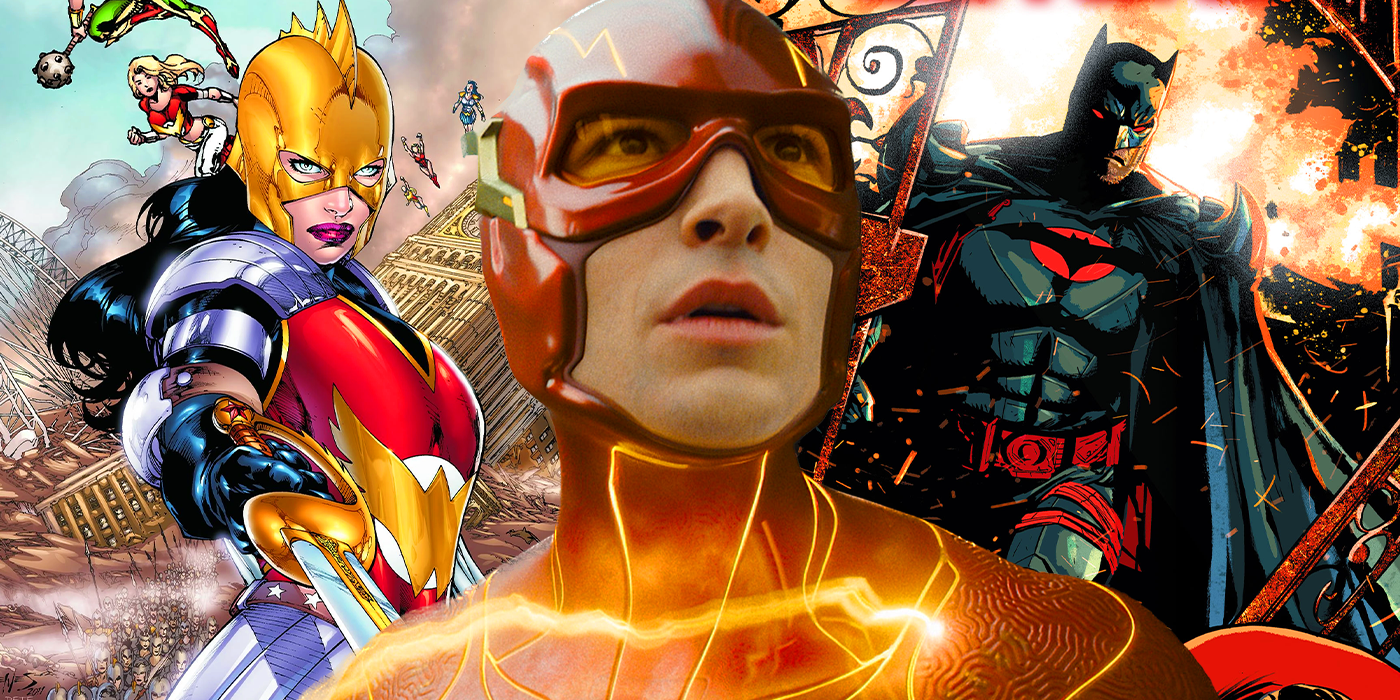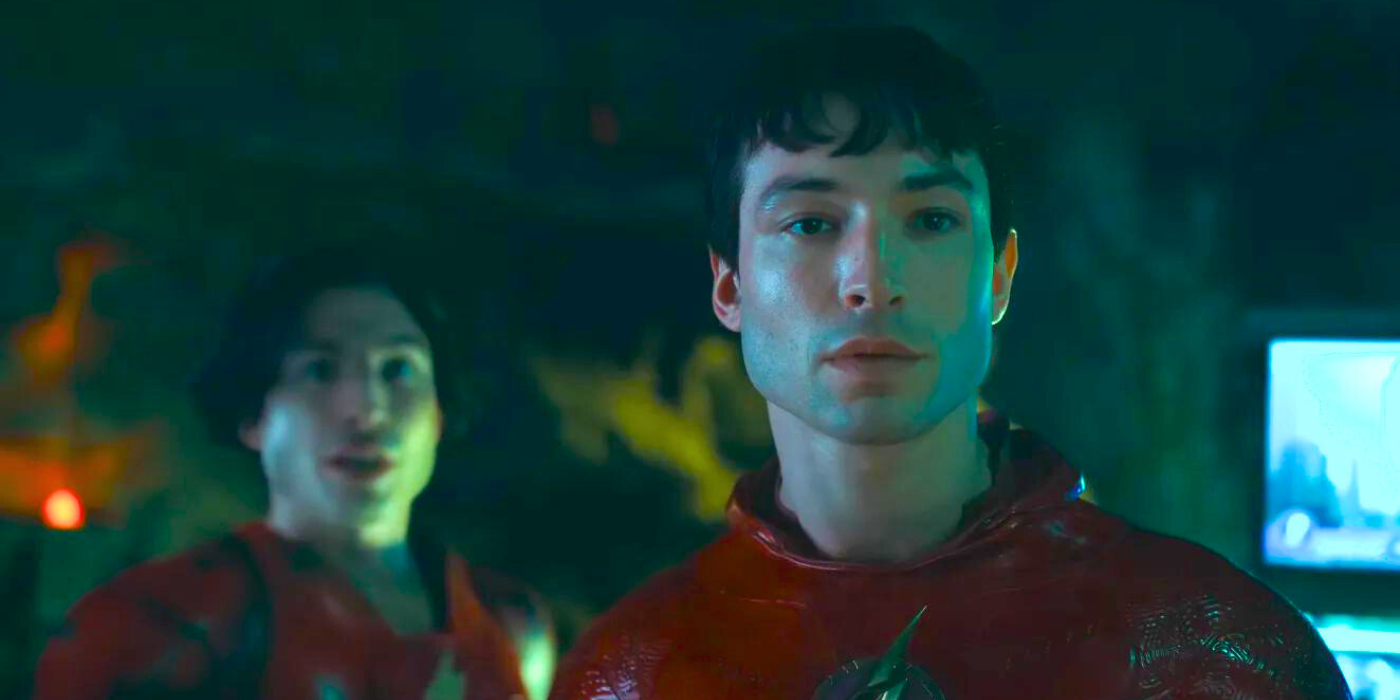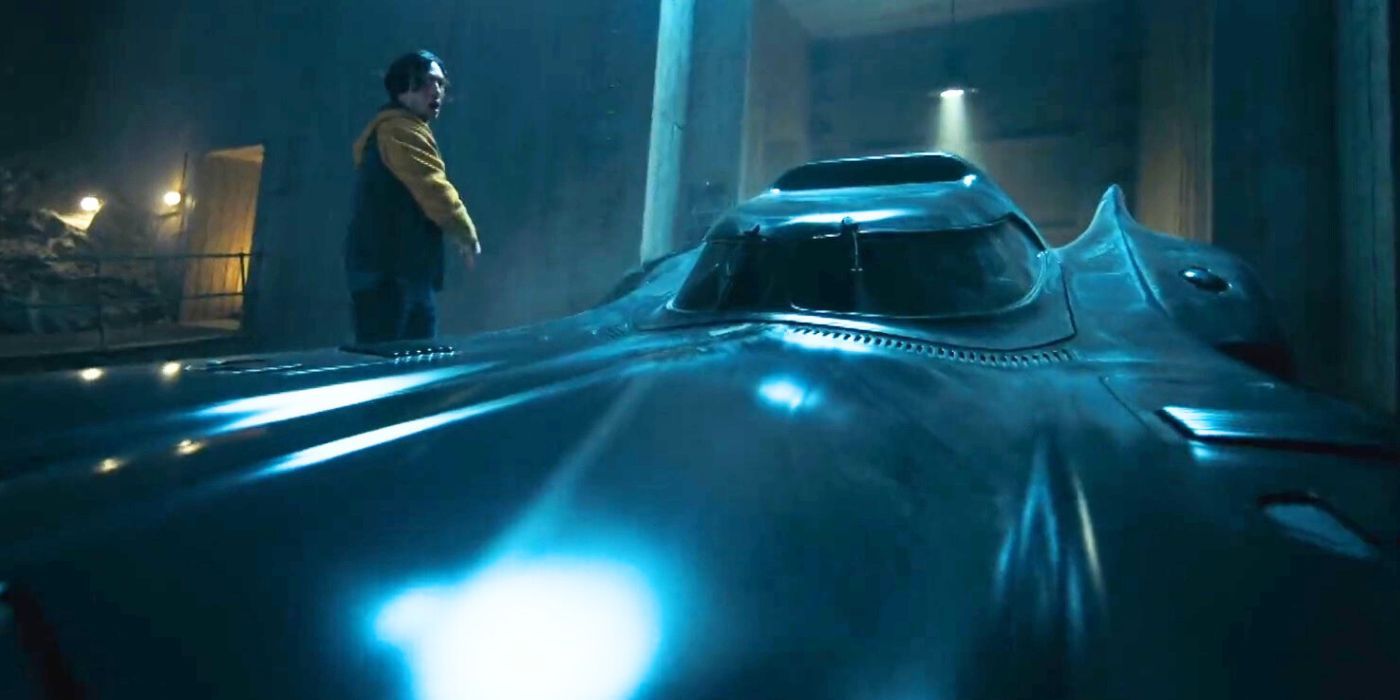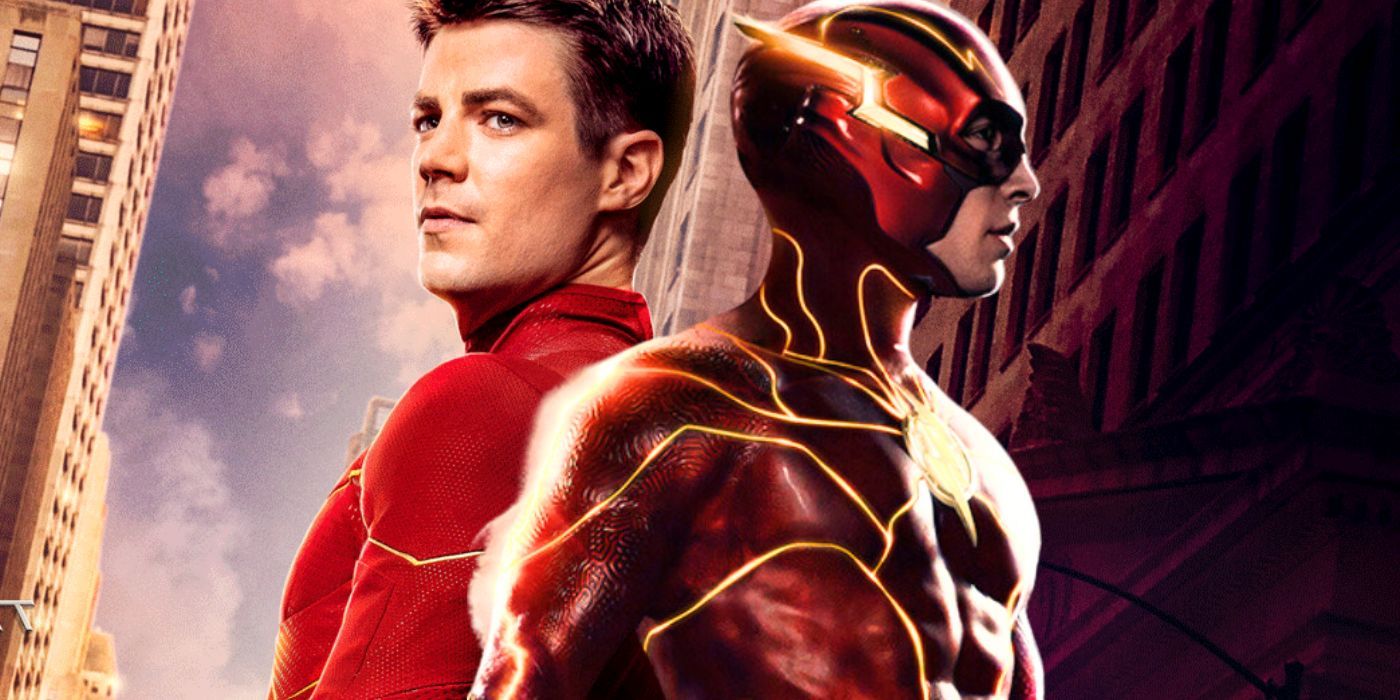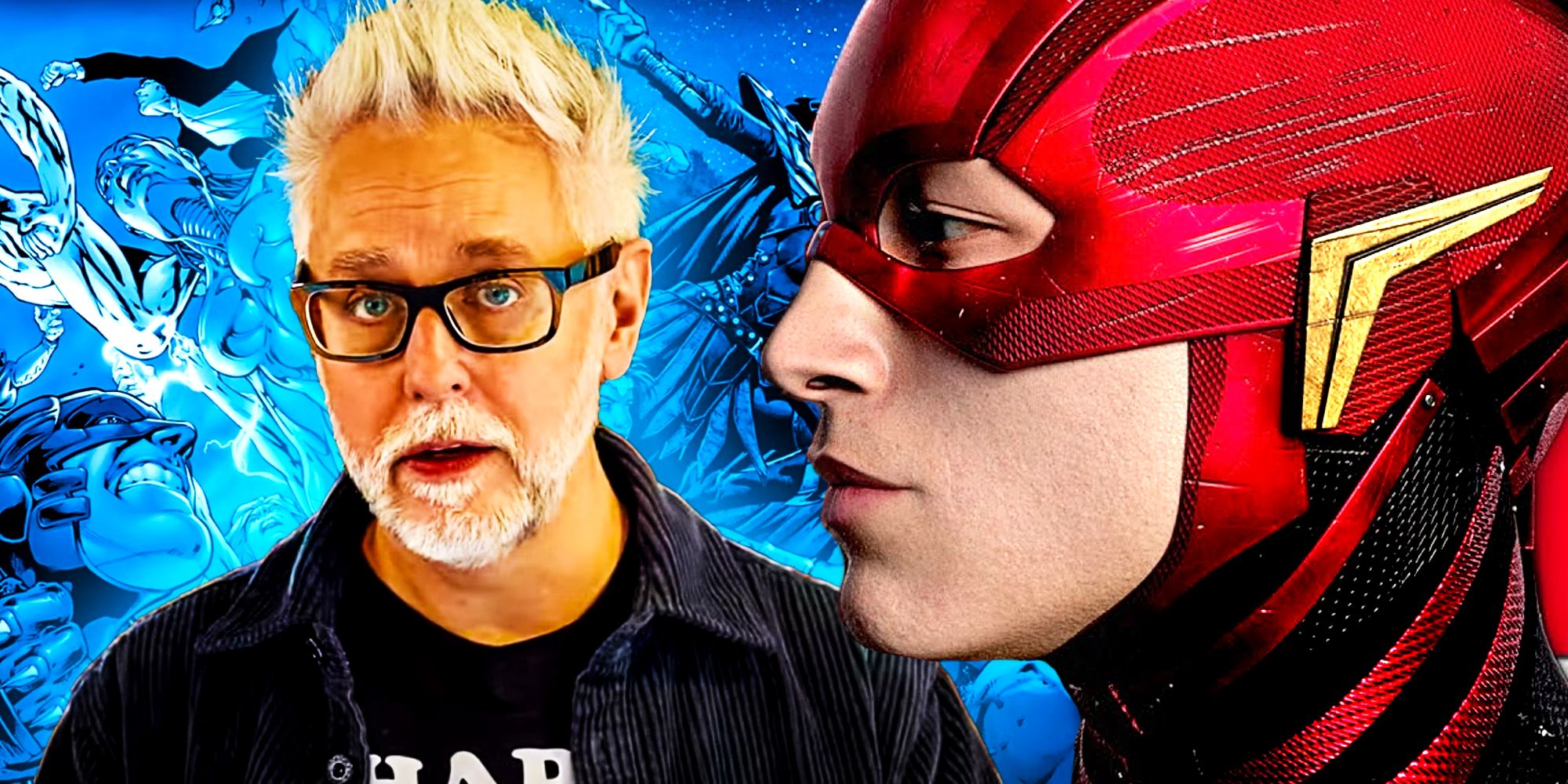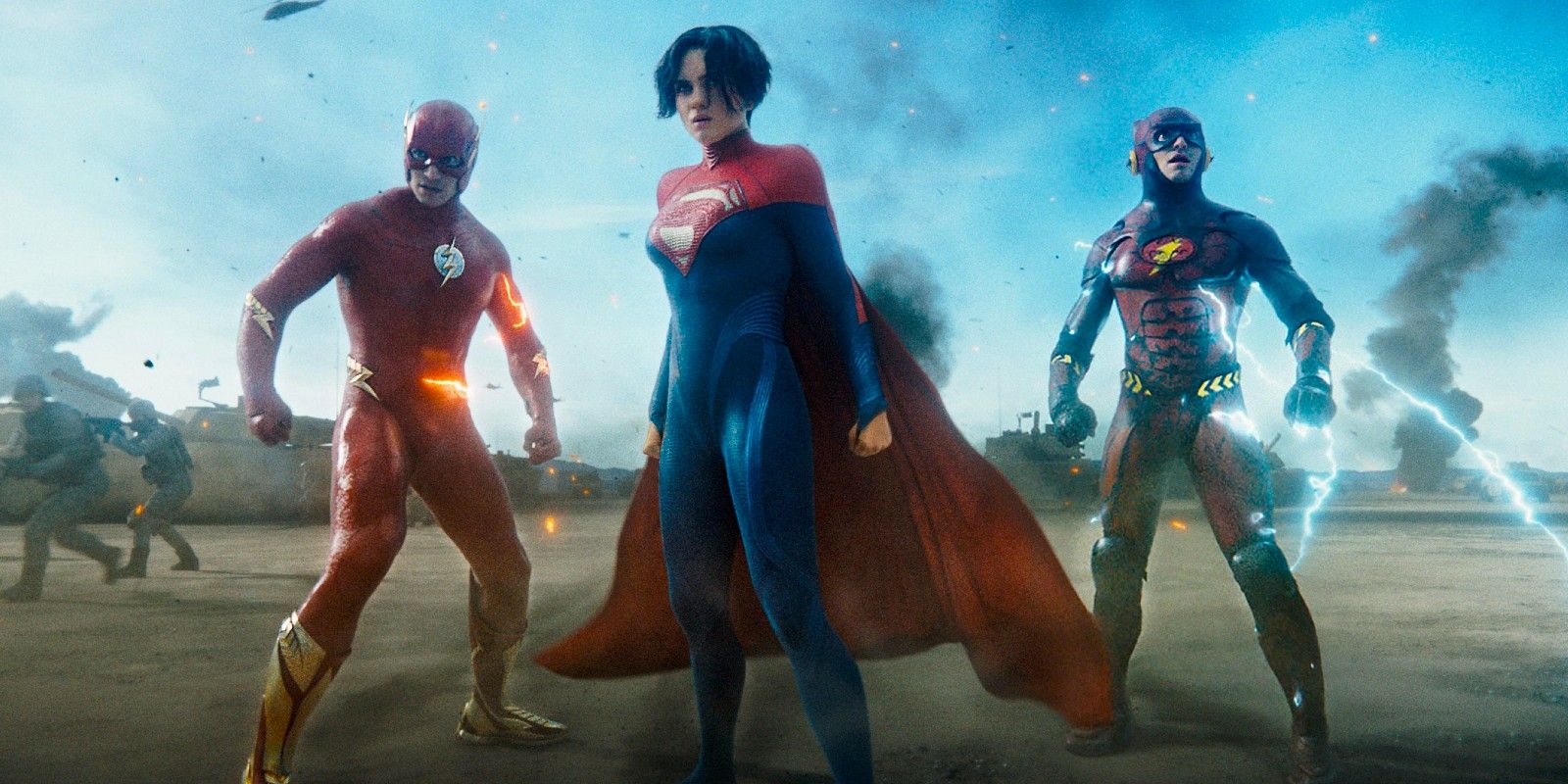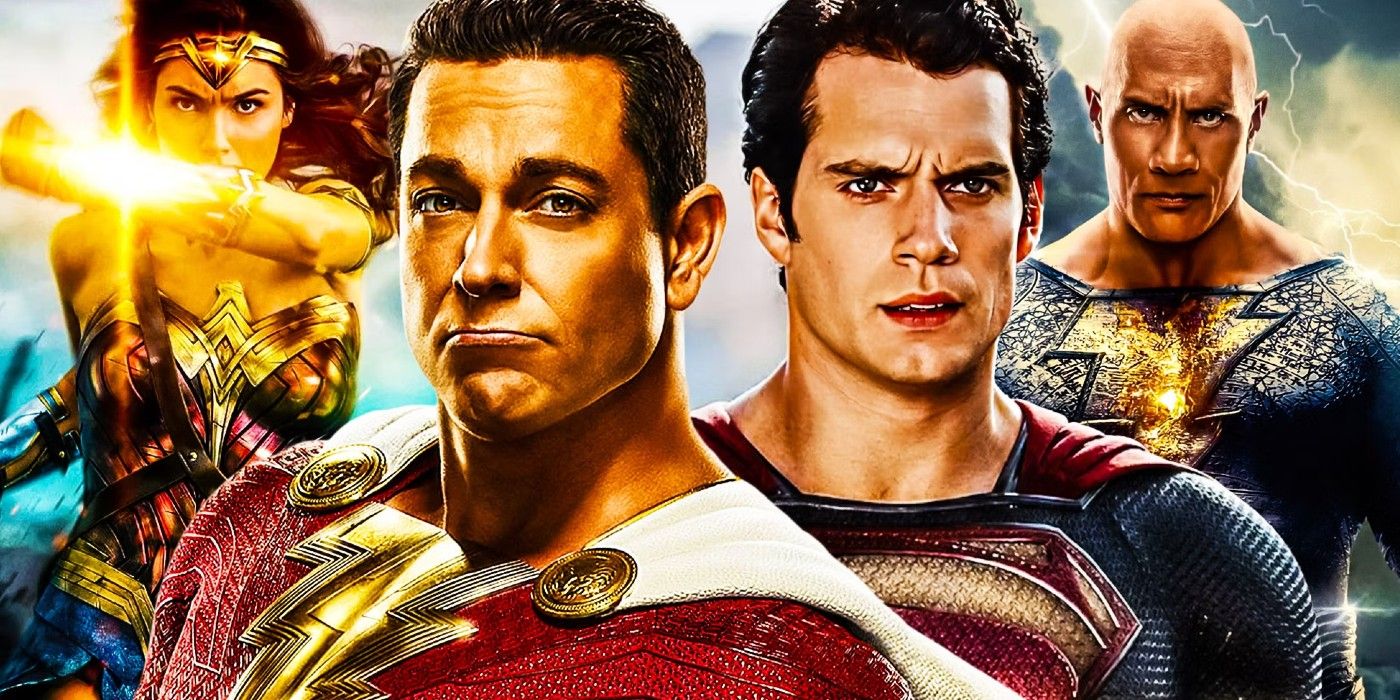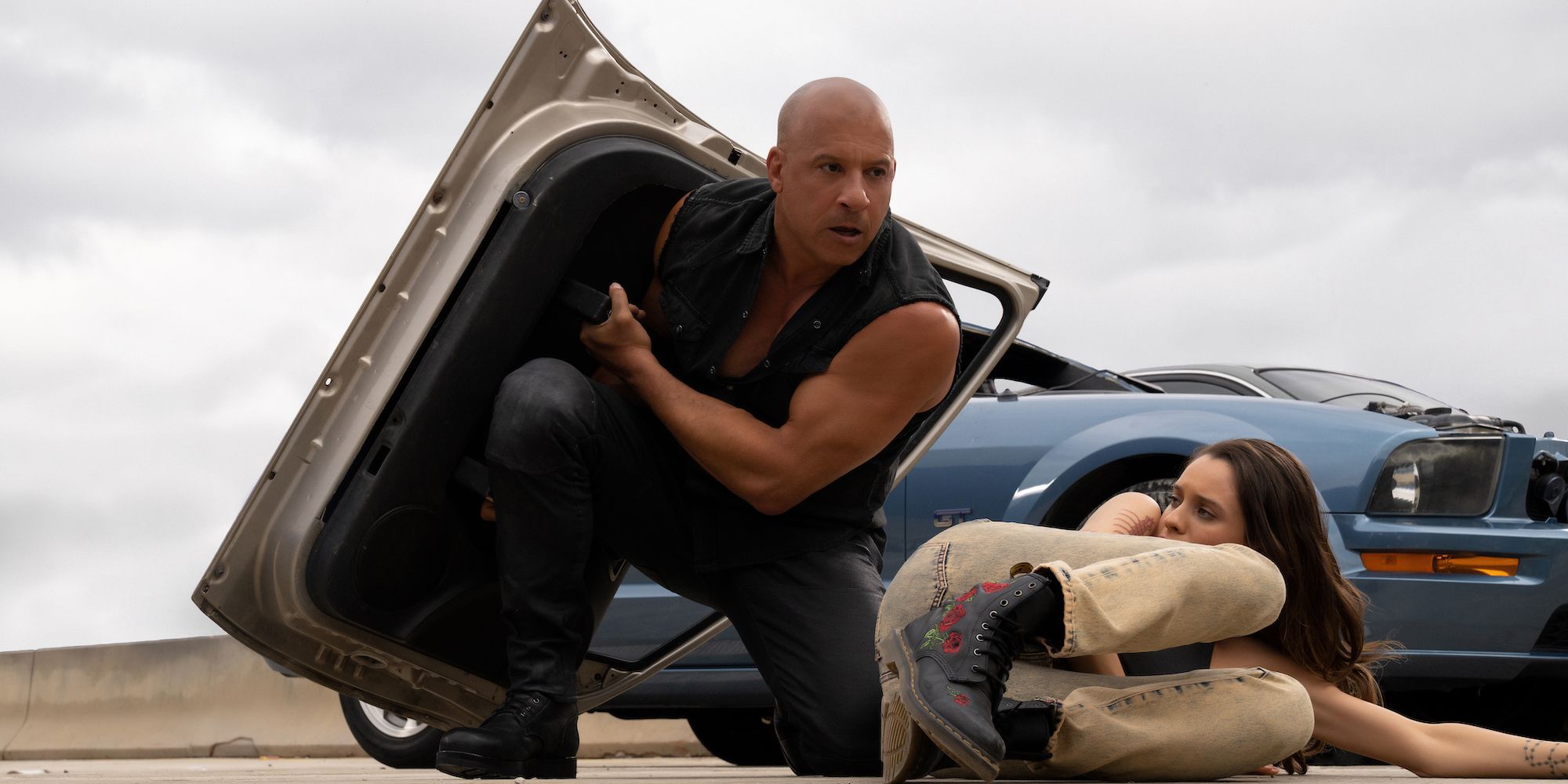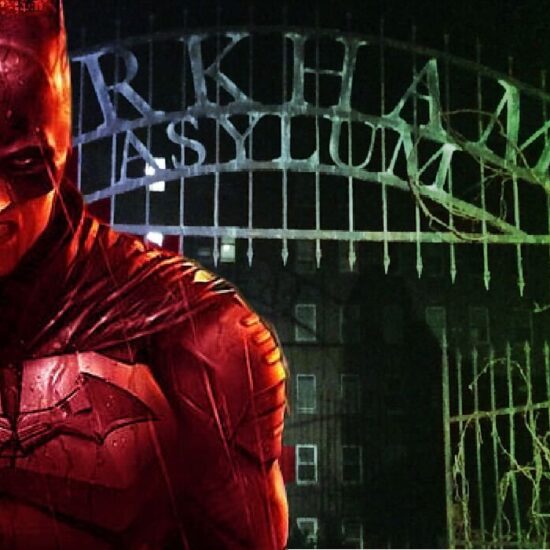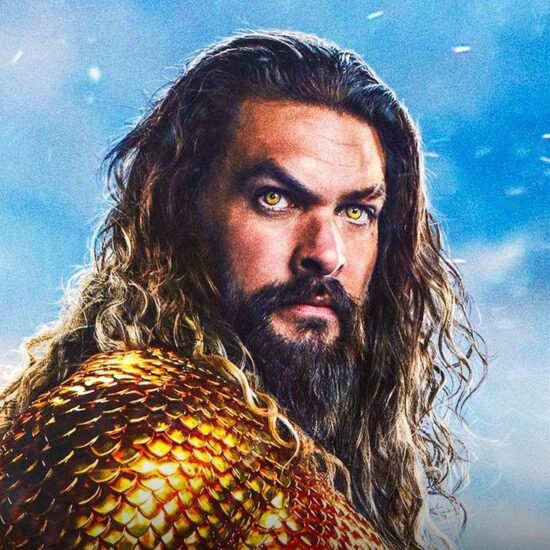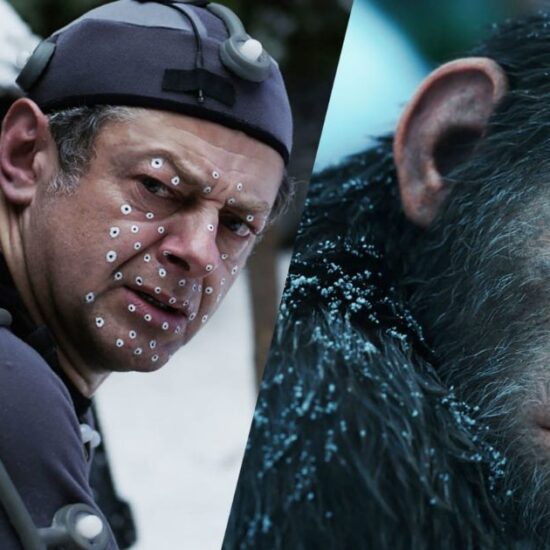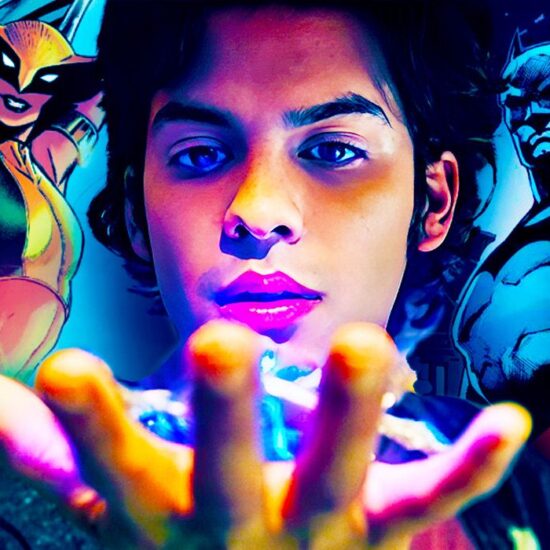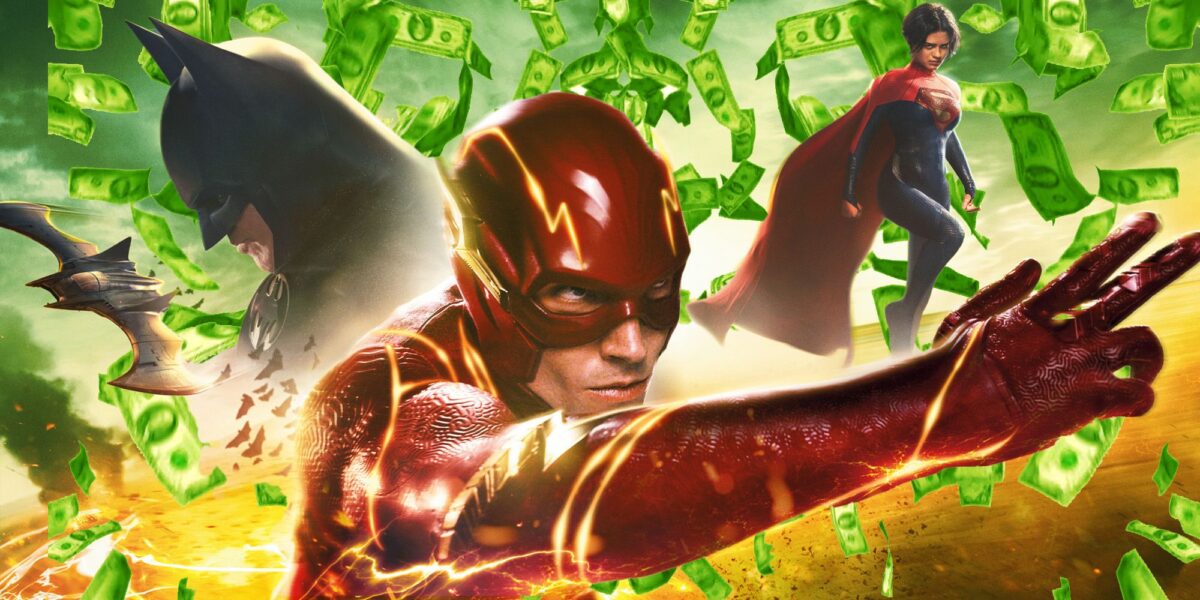
The Flash may feel like just another box office failure: for 2023, for DC, for superheroes. But what’s really going on here is a microcosm of the strains that exist in modern Hollywood, teaching how a movie is marketing repeatedly through its life cycle and the trends that are beginning to choke out the industry.
Costing a reported $220 million, The Flash brought in $55 million domestically and $139 million worldwide at the box office over its opening weekend. Conventional wisdom dictates a movie needs to make back twice its production cost to account for marketing to break even, and mixed word-of-mouth make its status a box office bomb is all but secured.
Naturally, there are more theories as to why than there are Earths in the DC multiverse theorizing what went wrong, each trying to posit the single nexus point where everything fell apart. However, The Flash’s box office struggles aren’t the result of any one flaw, but a brew bad luck, poor decisions and trends that have left Barry Allen trapped in a cinematic purgatory it will take years to escape from.
15 Let’s Get The Ezra Miller Controversies Out Of The Way
There has been controversy surrounding Ezra Miller for several years, first crystallizing when a video of them choking a woman went viral. A string of reports of disorderly conduct, harassment and assault, leading to multiple arrests, as well as allegations of grooming at their Vermont Farm emerged across 2022.
This all in quick succession painted a stark picture, and posed questions for The Flash‘s fate. Miller plays not just the lead, but a key supporting character-turned-villain, so there’s no way to mitigate their role: you release The Flash, you release The Flash starring Ezra Miller. When Batgirl was cancelled along with several other HBO Max originals, it was even speculated that the movie could be shelved as a tax write-off (this was never likely, given The Flash was a Warner Bros. Pictures movie, not created specifically for the streaming service).
While the mainstream permeance of the allegations against Miller is hard to quantify outside the Twitter bubble, it’s undeniably a negative mark on the movie, and one that soured the build-up of momentum.
14 The Flash’s Press Tour Was Weakened By No Ezra Miller (Or Michael Keaton)
The eventual strategy for The Flash’s marketing campaign regarding Miller was to essentially downplay the star. Barry Allen is undeniably at the center of the movie, but Batman and Batman were pushed hard in the trailers. When it came to interviews, the star doing the heavy lifting was Supergirl actor Sasha Calle, with support coming from the filmmakers, top brass at DC and a revolving door of stars praising the movie from early screenings.
While that makes sense in the context of the movie’s release, it ignores a key part of getting any film into the minds of the masses. Typically, audiences would be inundated with the presence of a new movie’s stars as they tour interviews on TV and magazines, with quotes spread wide online and clips dominating social media. The discoverability of The Flash was deeply hurt by not having a star to trot out.
Michael Keaton has also been conspicuously absent, although the reason is a little less complex. He is currently filming Beetlejuice 2 in the UK, and so has done considerably less press.
Even with director Andy Muschietti and Calle taking on the bulk of the interview heft for The Flash, there was a further mar to their exposure. The Flash may have picture-locked well before the WGA strike began, but its impact was still felt.
One of the first dominos to fall as a result of the writer’s strike, with its impact felt by audiences long before primetime network TV or theatrical releases, is the late-night talk show. Conan O’Brien’s handling of the 2007 strike is legendary, and in the 2023 strike all the major players – Jimmy Kimmel, Jimmy Fallon et al. – have shuttered. This leaves a major interview outlet with large reach and high production values off the table, doubly impactful when these names have cornered the interview game on YouTube as well, often appearing high on the trending page.
12 Fan & Early Screenings Hurt (But Not In The Direct Way You’re Thinking)
The normal release heartbeat of a tentpole movie is quite simple. It premieres in LA/New York/London a week or two before release, then it gets shown to press with social and review embargoes lifting shortly after, then it opens wide for previews on the Thursday before the official release date. The timelines of this can vary quite a bit depending on a studio’s confidence in a movie (if it’s bad, keep the reviews until the last minute; if it’s good, get everybody who’s seen tweeting about it), but that’s the general approach.
The Flash went for an amped-up version that totally changes the dynamic. The film first screened at CinemaCon to theater owners and press in April, before copious screenings for press, then various rounds of fan screenings in the weeks leading up to release. Access to the screenings was a micro-controversy in itself, with queues of ticket-holders turned away outside the theater, but the net impact was a lot more people were seeing – and discussing – the movie well before it officially released.
How financially damaging the fan screenings were themselves is hard to quantify, and while there’s no doubt those in attendance would have bought a ticket opening weekend, the actual number of screens and people makes it a lowball estimate. However, the impact they had on the discourse, allowing spoilers of cameos (one of which – Nicolas Cage’s Superman – Muschietti broke to the press to get ahead of) and criticisms of CGI to leak through well before most had seen, soured and directed the conversation.
It’s worth noting that, until early June, the version showing wasn’t fully finished, with George Clooney’s cameo and the post-credits scene absent (the film was otherwise complete). While done to protect spoilers, this ultimately had a counter-effect of making everything else fair game – and led to the Clooney confirmation being roundly discussed on social media.
11 The Bad CGI Narrative Took Over
That “unfinished” moniker applied to The Flash in the early screenings could have been seen as a saving grace: perhaps the CGI wasn’t going to be that bad. From the opening scene where The Flash saves a maternity ward of babies in free fall to the time bubble sequences to the Infinite Earths cameos and Dark Flash, the VFX in the movie looks decidedly unfinished. Human models in particular are distractingly rubbery, conjuring memories of The Matrix Reloaded and The Mummy Returns as much as Superman: The Movie.
One suspicion is that Warner Bros, realising the box office potential of the movie was unclear, decided to limit the already high $220-million budget to avoid further losses, although director Andy Muschietti has defended some of the effects (specifically the baby scene) as an intentional view of the Speed Force. There’s some logic there, but it doesn’t excuse moments like Nicolas Cage’s Superman when the actor exists to star as himself.
Given its less-spoilery connotations, that The Flash had bad CGI spread wide in a way the exact cameos did not. It became the defining aspect of the pre-release online discourse, punctuated with cam footage of the scene with a baby in a microwave.
10 Audiences Don’t Love This Version Of The DC Universe
The current iteration of the DC Universe, of which The Flash is something of an unwitting denouement, began in 2013 with Man of Steel and it’s been a rocky road ever since. The roadmap announced in 2014, the backlash against Zack Snyder, his subsequent firing from Justice League and replacement with Joss Whedon, the success of Wonder Woman, the will-they-won’t-they of Henry Cavill’s Superman, The Suicide Squad soft-reboot, the Snyder Cut release, Dwayne Johnson’s failure to change the hierarchy of power, three different owners of Warner Bros: it has, quite frankly, been an exhausting 10 years.
Yet for all that change and all that discourse, there’s one unifying factor: this is all the same universe to the general public. It doesn’t matter which Justice League is canon or whether Superman’s head is CGI, it’s the same universe. And it’s one with a mixed reception, by any metric (box office, Rotten Tomatoes and CinemaScore all skew higher than generally expected, but it’s not a resounding endorsement).
The Flash is leaning on the Tim Burton Batman era, which we’ll get to, but the existing DCEU is the norm from which it’s deviating. The casting of Barry Allen, the grounding of Ben Affleck’s Batman, the Superman that Supergirl should be measured against, and the Battle of Metropolis are pillars of the movie. Yet there’s no ingrained love for the world to make seeing it reconfigured a sell. When the Avengers traveled back to key movies from the MCU in Avengers: Endgame, the audience excitement came from revisiting beloved moments. That’s not something the DCEU ever fully earned, and so the currency The Flash trades in fails to connect with audiences.
9 Flashpoint For A Lesser-Proven Flash
The audience’s love of the DCEU is even more true of The Flash as a character. Although Miller has been attached to the role for the better part of a decade, his only appearances are a quick cameo in Batman v Superman: Dawn of Justice, a starring role in noted box office bomb Justice League, and the same in the streaming release Zack Snyder’s Justice League.
His first solo appearance, then, isn’t that deep into his tenure. Yet it is, essentially, Flashpoint, a universe-defining event that, while hinging on Flash’s origin, has wider ramifications for the whole universe that rebooted the entire comics run up to that point.
Now, the argument that filmmakers need to “wait” to tell a story, that you needed another Superman solo story before ever trying to insert Batman, doesn’t hold water: a good story is a good story, and multiple concepts can be communicated at once. However, from a marketing perspective, putting Flashpoint as The Flash movie risks making Barry Allen a passenger in his own showcase, and lacks a direct empathy connection point – something that was so key to the success of Aquaman and Wonder Woman (along with many MCU hits).
8 The Flash’s Super Long-Lead Marketing
The Flash was first announced in 2014 as part of the DC Extended Universe slate for release in 2018. Much has been made of the movie’s various release delays and its revolving door of directors that makes Lucasfilm’s filmmaker retention enviable, but that isn’t necessarily fuel for a box office bomb. It’s a very online discussion, and James Cameron showed just last year with Avatar: The Way of Water that repeat delays needn’t be a concern.
However, there is a risk of a movie being in the general audience’s minds for so long that it becomes stale. And, once The Flash took shape, it certainly pushed hard. The first two-minute footage compilation (Ezra Miller went to great lengths to not call it a trailer, despite it being very much that) was released in October 2021 at DC FanDome, 20 months before release. This is hardly rare for DC projects, which tend to drop footage at fan events and, either intentionally or after leaks force them, follow up online, but it meant the beginning of marketing, with footage of a movie, arrived with more than enough time for interest to oscillate.
In fact, at this point, the movie was set for November 2023, so it was an even longer lead-in.
7 My Eyes, The Nostalgia Does Nothing
The biggest nostalgia note on The Flash’s release weekend was the backlash against the goulish use of classic iterations of characters from previous movies and shows, in particular, Christopher Reeve and George Reeves’ Supermen. While these complaints did gain traction out of fan screenings pre-release, it’s not something that directly correlates with box office.
What does is Michael Keaton. He was the core of the advertising from the moment he signed on, used to amp up expectations for a solo Flash film. Quite why he doesn’t hit in the same way as other legacy-quel cameos is a nuanced one worthy of its own article. Did Warner Bros. overestimate the interest in his Batman, at a time when the nostalgia window is shifting towards the late 1990s and early 2000s? Or was offering a 1989 Batman with all the iconography, yet filtered through modern sensibilities, actually as dissonant as Adam West would be in Tim Burton’s Gotham? Ultimately, Keaton didn’t stir general audiences in a way that Han Solo, Rocky or Pete “Maverick” Mitchell could.
This is a qualitative aspect of the film: even the spoilers that did become part of the narrative more genuinely speak to this disconnect. Nicolas Cage’s Superman is an incredibly deep-cut reference to Tim Burton’s unmade Superman Lives who was reconfigured to be pre-release marketing after it risked getting out. The same is true of Clooney, who played Batman once in a movie that released before The Flash’s target demographic (16-25-year-olds) were born.
6 The Incredibly Tight Limitations Of The Multiverse
When Keaton was reported to be in The Flash in mid-2020, the multiverse still seemed like a fresh concept. There had been Spider-Man: Into the Spider-Verse, but otherwise the idea was still the reserves of more obscure sci-fi.
Since then, however, everybody’s gone Multiverse mad. No less than six MCU projects released since Endgame (WandaVision, Loki, What If?, Spider-Man: No Way Home, Doctor Strange in the Multiverse of Madness, Ant-Man and the Wasp: Quantumania) have played with the concept in various ways, with one essentially aping The Flash’s unique selling point. No Way Home’s three Spider-Man trick, bringing back Tobey Maguire and Andrew Garfield to fight classic villains alongside Tom Holland, beat The Flash’s Michael Keaton return to the punch, and severely softens the novelty.
Add in that there are more multiverse movies showing the more expansive potential of the concept to acclaim, and there’s a sense The Flash is arriving already too late for the trend – or at least behind what’s now expected. Best Picture winner Everything Everywhere All At Once is A24’s highest-grossing movie, and Spider-Man: Across the Spider-Verse released just two weeks before The Flash with much higher creativity baked in throughout.
5 Confusion & Conflict With The CW
The most popular representation of the Scarlet Speedster is The CW TV show starring Grant Gustin, a cornerstone of the Arrowverse that ultimately became more popular than the mainline parent series Arrow. Although ratings waned in recent years following the Crisis on Infinite Earths crossover event, The Flash TV show remained a key show on the network, with the finale airing on May 24, 2023, less than a month before The Flash movie’s release.
The target audiences may differ, but a lack of clarity between the two further muddied the messaging, the movie neither steering into what the show provided to the character or making clear the argument of a distinct take. This is compounded by Ezra Miller’s cameo in the Crisis on Infinite Earths event, and them teasing in interviews there’d be a crossover with Grant Gustin. It may seem simple to those terminally online, but there’s a deep-rooted confusion at play that was roundly ignored.
Contrast to other DC movies such as Joker and The Batman, which despite branding that hews much closer to the core series, were able to cleanly carve out their own audience niche. They are, of course, helped by being Batman-related, a character substantially more popular than any iteration of The Flash.
4 James Gunn’s DC Universe Makes The Whole Thing Moot
All 2023 DC movies are lame ducks. Shazam! Fury of the Gods, The Flash, Blue Beetle and Aquaman 2 all release after the company has stated, plainly, that they don’t matter. James Gunn is hard rebooting the DC universe beginning in 2025 with Superman: Legacy.
Knowing that The Flash isn’t important, that it not only doesn’t have any bearing on any wider story but also will be wiped from narrative existence in one form or another, severely lessens that hook to the more engaged audience. That doesn’t preclude the movies from being good, but it does remove a lot of the essential feeling that powered the MCU to such heights, especially in Phase 3 as Avengers: Infinity War loomed. The value factor of this is often overstated, but alongside everything else discussed, this further made the movie appear disposable.
There was an undercurrent effort to suggest that The Flash’s Flashpoint story would be the event that reset the DCEU (and, in early versions, its ending would have done just that). This ran up to release, and is likely why the George Clooney cameo was kept under wraps: what if that unseen Bruce Wayne is the star of The Brave and the Bold? Now, that seems incredibly unlikely, a coda gag more than anything for the future.
3 The “Best Superhero Movie Ever” Narrative Didn’t Work
In lieu of a star and knowing it was the end of this universe, one of the defining parts of The Flash’s marketing was to promote it on quality, sight-unseen. Warner Discovery CEO Peter Zazlav and James Gunn have both been praising it as some variant of the “best superhero movie ever made”, and a cavalcade of stars has shared similar sentiments. Even Tom Cruise saw The Flash reportedly called Muschietti to rave about the picture.
Given the snap-back of critical reviews and CinemaScore, it’s clear that sentiment is not shared by those actually seeing the movie. The Flash isn’t a case like Shazam! Fury of the Gods where the movie was a pretty fun time marred by wider factors, but a film that is genuinely dividing audiences (or, perhaps more accurately, uniting them in a collective shrug).
In this light, the early claims scream of a concerted effort to drum up interest. As with fan screenings is far too nebulous to put a real number on it, but a rejection of these corporate ideas rings true.
2 Superhero Fatigue Is Real (Sort Of)
Kevin Feige once said that he rooted for DC movies because they were in the same ecosystem than Marvel. That’s abundantly clear as both studios begin to fumble more and more at the box office. Marvel has to also shoulder an increased apathy following Avengers: Endgame tied up the 23-movie Infinity Saga, but there’s clear evidence of audiences moving away from capes and tights – to some degree.
This year already, there’s been Ant-Man and the Wasp: Quantumania, Shazam! Fury of the Gods and Guardians of the Galaxy Vol. 3, with The Flash now joining the ranks. Three out of four are widely regarded as bombs. It would be easy to look at what didn’t work, but it’s the exception that highlights the distinction. Guardians of the Galaxy 3 currently sits at $821.6 million worldwide, within reach of Vol. 2 from 2017 (a different era for the box office and superheroes).
Why? It was a movie that sold itself with confidence and clarity, that offered audiences something they wanted. Fundamentally, too, it was good, leading to a strong box office week-after-week as word-of-mouth spread (the same applies to Spider-Man: Across the Spider-Verse).
Superhero fatigue exists, and quality isn’t always going to be the defining metric. The age of any superhero movie being a de facto smash is waning. But there’s a space for films that can communicate themselves well – which as we’ve already seen, The Flash struggled with.
1 It’s Bad At The Box Office
It’s not just Marvel and DC that are struggling at the box office. Outside of the superhero fatigue concern, there’s the lingering impact of COVID, shorter release windows, rising cost of living, decreased range of releases that make going to the theater less of an event (especially families). Paired with a shrinking Chinese exposure, and that’s a recipe for financial troubles.
A combination of these is why movies from juggernauts have faltered repeatedly: Elemental continues Pixar’s losing streak after several years on Disney+; Transformers: Rise of the Beasts followed Bumblebee more than Bay; and Fast X went to VOD after just three weeks. The Flash, along with its fellow Marvel and DC brethren, is just one part of a much bigger trend that’s evolving.
There certainly are movies breaking through, some highlights in the year so far being M3GAN, The Super Mario Bros. Movie, John Wick: Chapter 4. What stands out about that selection, aside from the way in which they connected with audiences throughout the marketing campaign and delivered on what was promised, is the modest budgets scaled against their demographic, lessening risk and amplifying results. Had Dungeons & Dragons: Honor Among Thieves ($208 million from a $150 million budget) and The Little Mermaid ($460 million from a $250 million budget) come with a smaller price-tag, their narrative would be viewed entirely differently.
Again, the need for quality entertainment that sells itself with purpose, not blatant franchise management stretched out needlessly, is a fair learning to take. But as with anything, the real causes go much deeper than any one aspect.







